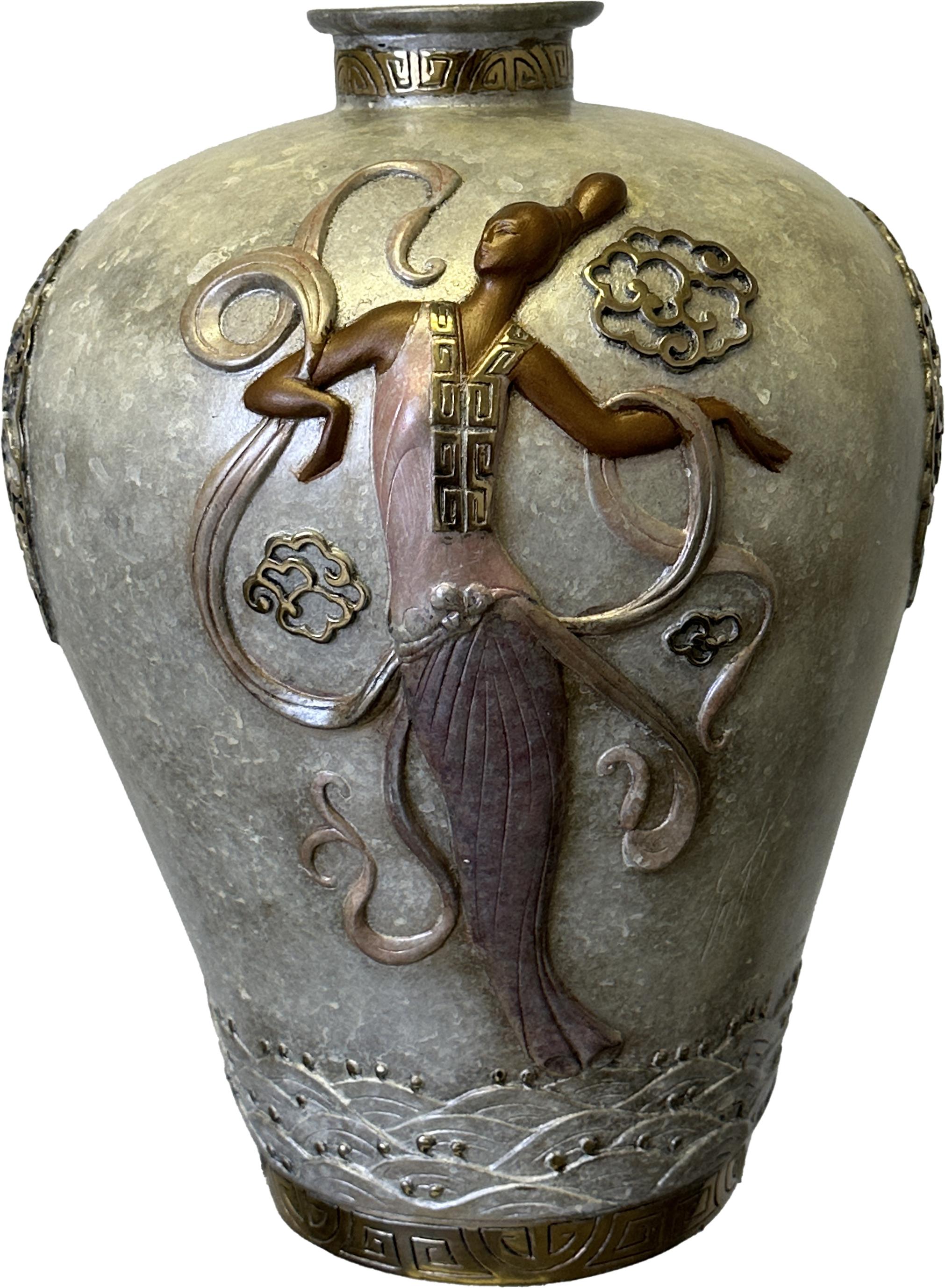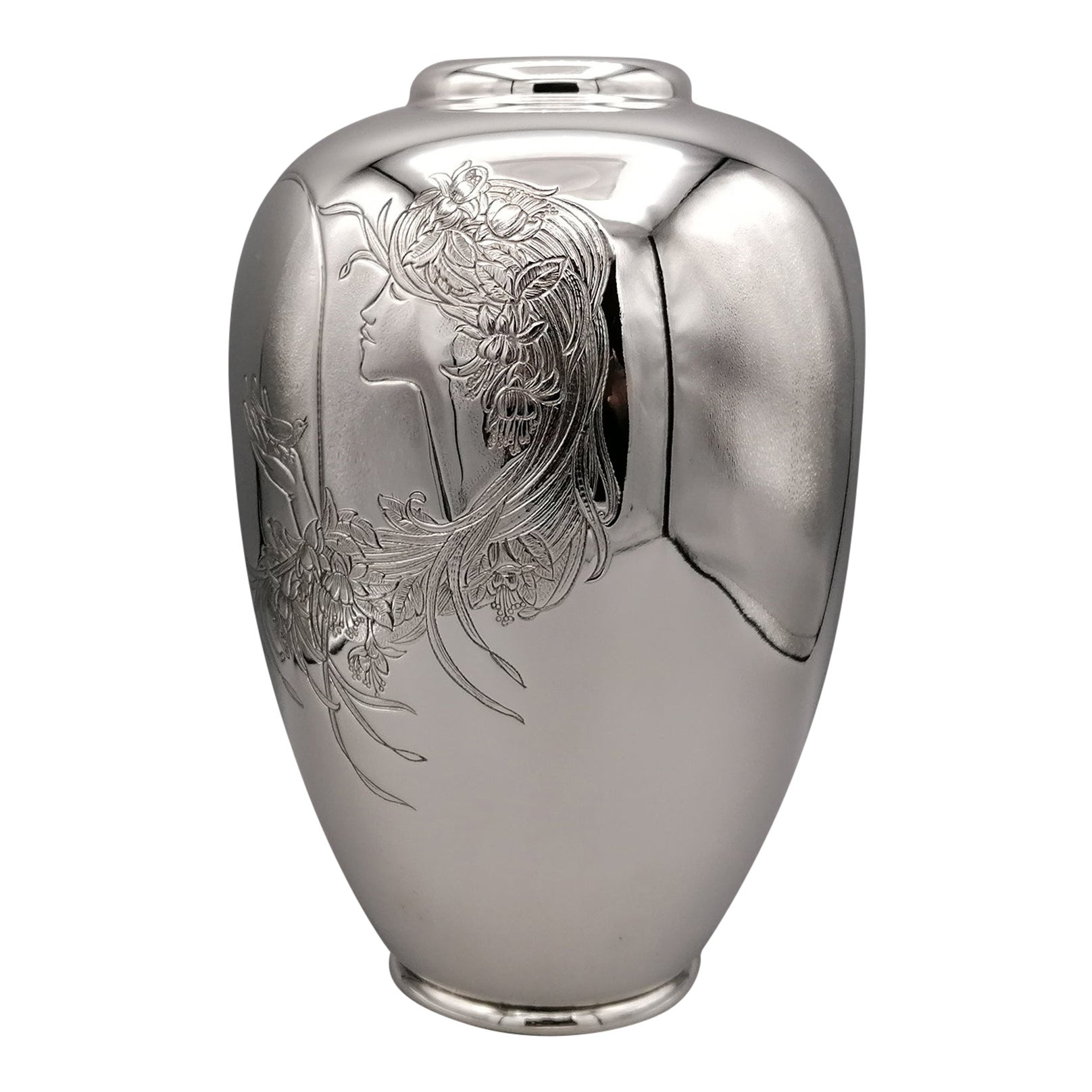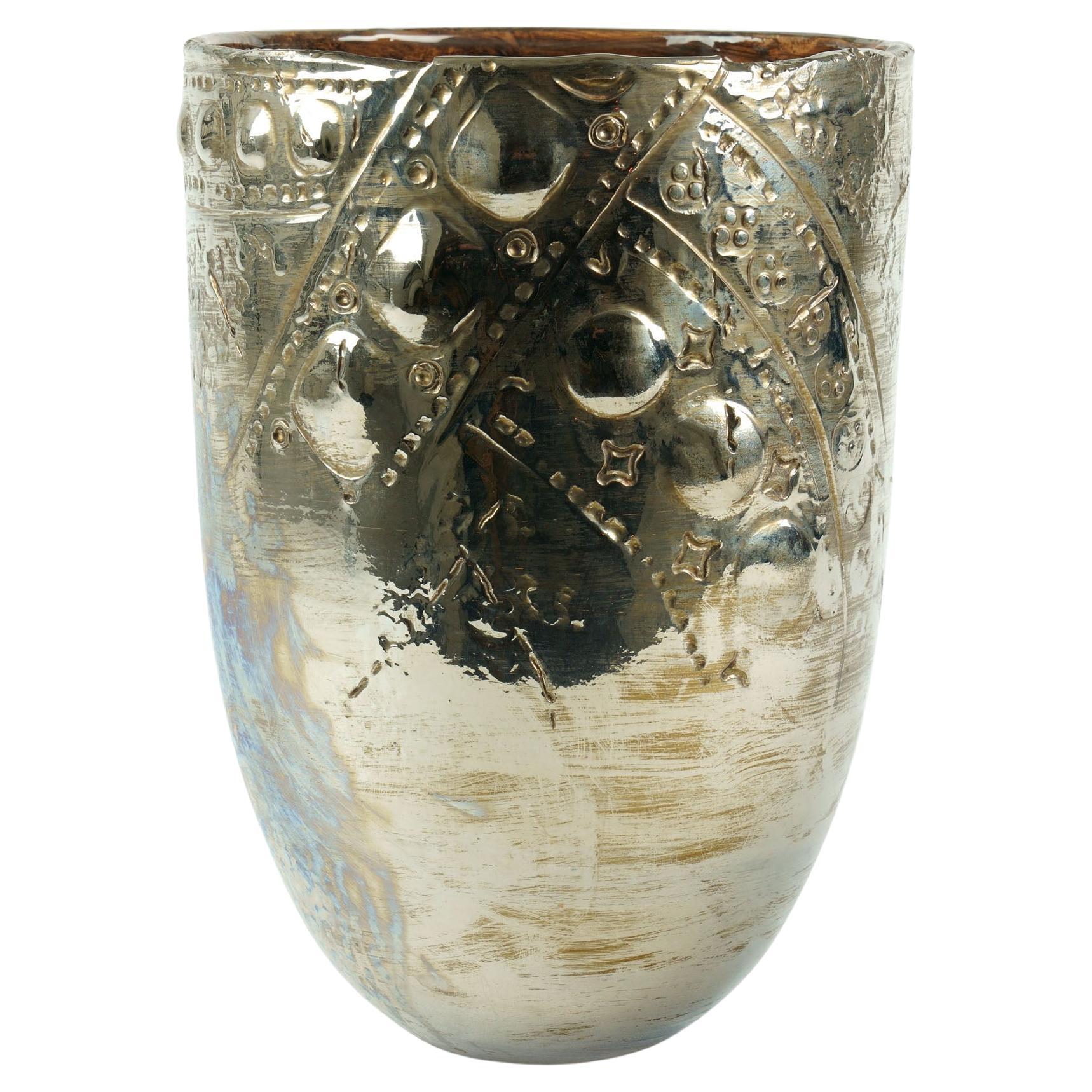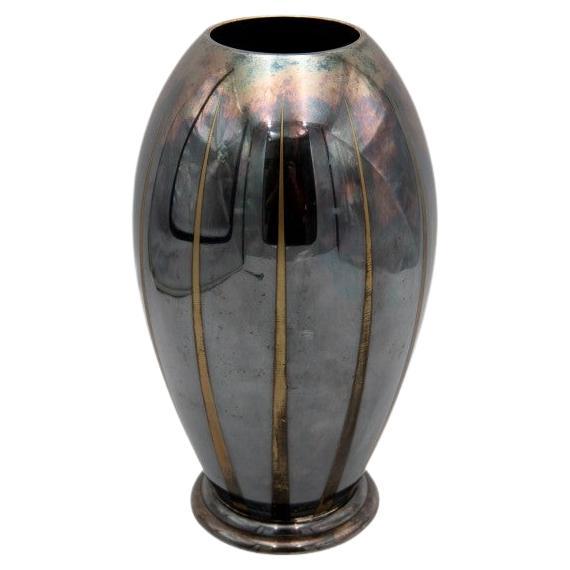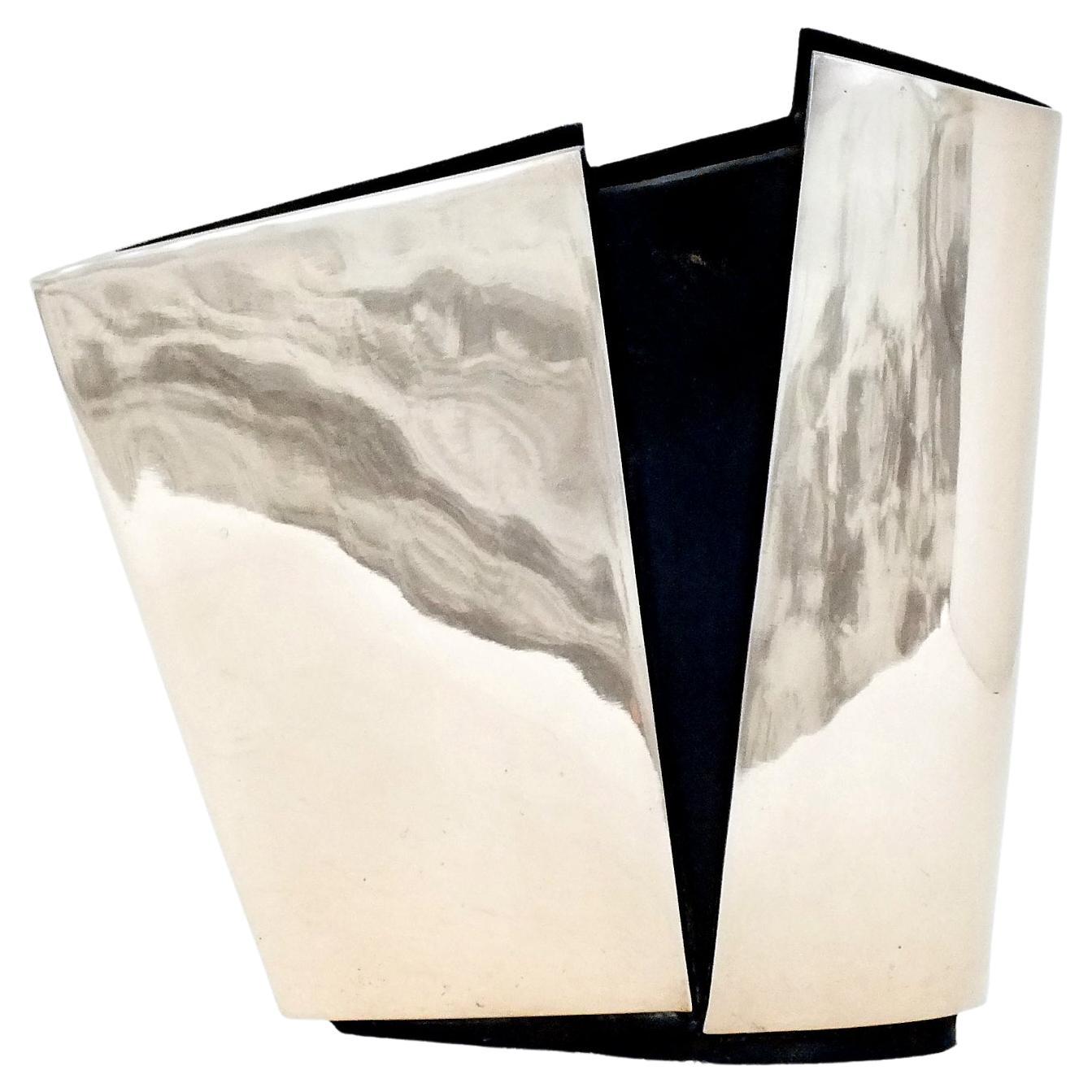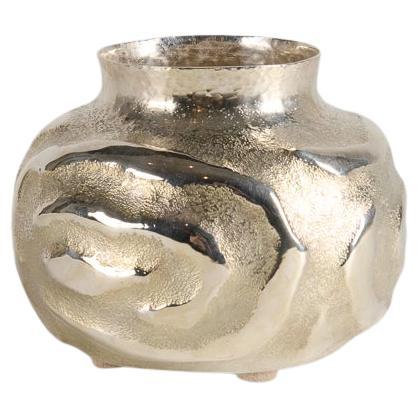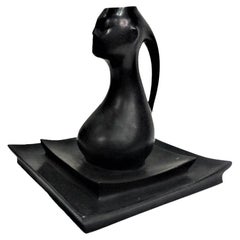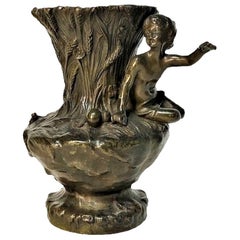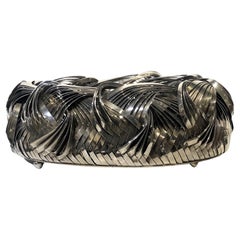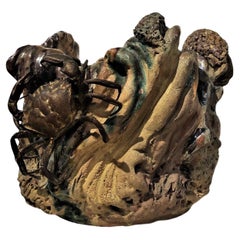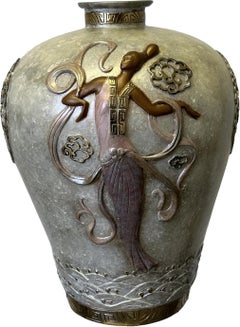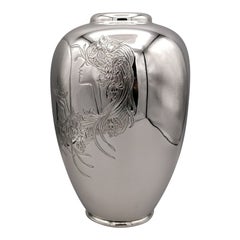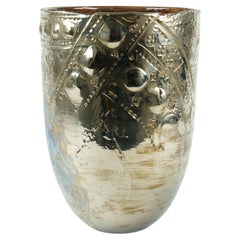Items Similar to Erte, "She Loves Me", Silvered Bronze Vase, 1987
Want more images or videos?
Request additional images or videos from the seller
1 of 8
Erte, "She Loves Me", Silvered Bronze Vase, 1987
$1,500
£1,131.39
€1,306.76
CA$2,101.60
A$2,336.86
CHF 1,223.39
MX$28,545.21
NOK 15,373.10
SEK 14,461.48
DKK 9,754.90
About the Item
ERTE
a/k/a/ Romain de Tirtoff
“She Loves Me"
Vase
Silvered Bronze Vase
1987
DIMENSIONS
Height: 9.5 inches
Width: 12.5 inches
Depth: 7.5 inches
ABOUT
Erte (a/k/a Romain de Tirtoff, Russian/French, 1892-1990) "She Loves Me" Silvered Bronze Vase, signed on the bottom "Erte" and numbered and stamped in cast "©1987 / CONKER / 194/275".
ABOUT ARTIST
Erté (Romain de Tirtoff) (1892–1990) was a Russian-born French artist and designer, renowned for his work in fashion, illustration, and graphic design. Born in St. Petersburg to an aristocratic family, he was the son of a naval admiral. Initially studying at the Imperial Academy of Fine Arts, Erté turned away from a military career to pursue a creative path. He moved to Paris in 1912, where he became a leading figure in the Art Deco movement.
Erte's career spanned multiple disciplines, but he is best known for his extravagant fashion illustrations, set designs, and costume creations for the theater, ballet, and film. His distinctive style combined elegance with dramatic flair, often featuring elongated figures, intricate patterns, and a sophisticated palette. He created iconic designs for the French fashion house Paquin, and his illustrations graced the covers of Harper's Bazaar for over two decades.
In addition to his work in fashion, Erté designed lavish sets and costumes for productions like the Ziegler Follies and The Merry Widow. Throughout his career, he achieved great success in the worlds of fine art, advertising, and commercial design.
Erte's legacy endures in his timeless visual language, which remains a celebrated example of Art Deco elegance. He continued to create until his death in 1990 at the age of 98.
- Dimensions:Height: 9.5 in (24.13 cm)Width: 12.5 in (31.75 cm)Depth: 7.5 in (19.05 cm)
- Style:Art Deco (In the Style Of)
- Materials and Techniques:
- Place of Origin:
- Period:1980-1989
- Date of Manufacture:1987
- Condition:Wear consistent with age and use. Excellent vintage condition consistent with age and use. We make our best effort to provide a fair and descriptive condition report. Please examine photos as part of the description. Send us a message to request more details or discuss price.
- Seller Location:New York, NY
- Reference Number:1stDibs: LU2819342402632
About the Seller
5.0
Gold Seller
Premium sellers maintaining a 4.3+ rating and 24-hour response times
Established in 1993
1stDibs seller since 2017
84 sales on 1stDibs
Typical response time: 8 hours
- ShippingRetrieving quote...Shipping from: New York, NY
- Return Policy
Authenticity Guarantee
In the unlikely event there’s an issue with an item’s authenticity, contact us within 1 year for a full refund. DetailsMoney-Back Guarantee
If your item is not as described, is damaged in transit, or does not arrive, contact us within 7 days for a full refund. Details24-Hour Cancellation
You have a 24-hour grace period in which to reconsider your purchase, with no questions asked.Vetted Professional Sellers
Our world-class sellers must adhere to strict standards for service and quality, maintaining the integrity of our listings.Price-Match Guarantee
If you find that a seller listed the same item for a lower price elsewhere, we’ll match it.Trusted Global Delivery
Our best-in-class carrier network provides specialized shipping options worldwide, including custom delivery.More From This Seller
View AllAlfonso Canciani, Viennese Secession Orientalist Bronze Vase, c. 1910
By Alfonso Canciani
Located in New York, NY
Alfonso Canciani (Italian-Austrian, 1863-1955) was a famous Italian-Austrian sculptor of the period of accession to the Viennese Secession. Son of a stonemason, after a realist period he managed to establish himself as a leading sculptor of the Viennese Secession. In fact, he worked in Vienna, where he had enrolled in 1886 at the Academy of Fine Arts, then at the Higher School of Sculpture and finally at the Special School, where he obtained the Rome prize for the sketch for Dante's Monument.
He developed a notable business obtaining important prizes and numerous commissions. First among the sculptors of the Viennese capital, he was invited to join the Association of the Viennese Secession, of which Klimt was magna pars, after the exhibition of Dante's group in 1900 at the Secession exhibition, and obtained the most important Austrian artistic prize, the Kunstlerlpreis.
This same work, presented in 1910 in Berlin, at the Great Art Exhibition, also received an important recognition here. He obtained the Rome prize in 1896, exhibited successfully in Munich and in 1899 at the III International Art Exhibition in Venice.
In that period he made some statues of saints for the cathedral of Santo Stefano in Vienna, the monument to Wagner, the bust of Nietzsche for the University, the scepter and the gold chain of the University Rector, figures of Italian poets ( Petrarch, Boccaccio, Tasso, Ariosto).
He submitted a sketch for the official monument to Empress Elizabeth, which was then built in Austrisn Gföhl and Pula. At the time of his accession to the Secession, he dedicated himself to decorating the facade of the Artaria house in Vienna in collaboration with the architect Max Fabiani.
He later abandoned the symbolist decorativism of the Jugendstil for a more concentrated and vigorous style, approaching the Belgian sculptor Constantin Meunier for the theme of work, and preferring to exhibit at the Künstlerhaus.
In Vienna, he was generous with advice and help with the Italians and in particular with his fellow citizens (such as the Brazzanese Luigi Visintin, then a university student).
After the First World War, he returned to Italy and lived in Friuli, penalized by the fact that the Habsburg Empire had by now disappeared. Instead of large-scale public monuments, he then devoted himself to engraving medals (e.g. for Benedict XV and for the Italian mission in Vienna in 1919) and to designing funeral monuments (examples in Mali Lošinj and Trieste) and portrait busts (of Generals Carlo Caneva and Antonio Baldissera in Udine, sculptures of the War Memorial of Corno di Rosazzo). After all, he had already executed the Bab grave monument in the Döblinger cemetery in Vienna in 1909.
He taught in Trieste from 1920 until 1935, at the local school of industrial art, where he had Marcello Mascherini...
Category
Vintage 1910s Austrian Jugendstil Vases
Materials
Bronze
French Beaux Arts, Patinated Bronze Figural Vase by A. Bofill, Ca. 1900
By Antoine Bofill
Located in New York, NY
Antoine Bofill (Spanish-French, 1875-1925) was a Spanish artist and member of the Animalier movement of the 19th century. Best known for his small, decorative bronze sculptures, Bofi...
Category
Antique Early 1900s French Beaux Arts Vases
Materials
Bronze
Japanese Art Deco Ikebana Chromed Metal Basket, ca. 1930s
Located in New York, NY
Art Deco
Ikebana Basket
Chromed Metal
Japan, ca. 1930s
ABOUT
Ikebana is the Japanese art of of beautifully arranging cut stems, leaves, and flowers in vases and other containers t...
Category
Vintage 1930s Japanese Art Deco Planters, Cachepots and Jardinières
Materials
Metal
French Art Nouveau Iridescent Stoneware & Bronze Vase or Cachepot, ca. 1900s
Located in New York, NY
French Art Nouveau
Ocean Life Theme
Vase Cachepot
Iridescent Stoneware & Patinated Bronze Crab Appliqué
ca. 1900s
ABOUT
We present here a most unusual and utterly decorative Fren...
Category
Antique Early 1900s French Art Nouveau Vases
Materials
Stoneware
French Art Deco Art Glass and Wrought Iron Flower Vase, circa 1920s
By Charles Schneider
Located in New York, NY
Although unsigned, this Art Deco masterpiece in red and white art glass and wrought iron most probably by Charles Schneider.
Charles and Ernest Schneider were a generation younger...
Category
Vintage 1920s French Art Deco Vases
Materials
Wrought Iron
Japanese Art Nouveau Meiji Period Patinated Bronze Vase, circa 1900
Located in New York, NY
Although unmarked, this rare and important, grand but at the same exquisite patinated bronze vase has just a very few little details, defying the shape of the handles, as well as the...
Category
Antique Early 1900s Japanese Art Nouveau Vases
Materials
Bronze
You May Also Like
Oriental Mystery Objets de Arte Bronze Vase Limited Edition
By Erte - Romain de Tirtoff
Located in Rochester Hills, MI
Rare Erté Bronze Vase – “Oriental Mystery” – Limited Edition 46/395 – 1990 – Objets de Art
Add timeless elegance and Art Deco sophistication to your collection with this exquisite E...
Category
1990s Art Nouveau Still-life Sculptures
Materials
Bronze
20th Century Italian Solid Silver Engraved Vase
By Arval Argenti Valenza
Located in VALENZA, IT
Vase in 800 solid silver.
The shape of the vase is round, pot-bellied and has been made with a smooth and glossy finish.
The vason was embellished with a hand engraving depicting a...
Category
1990s Italian Chinese Chippendale Vases
Materials
Silver
$2,770 Sale Price
28% Off
Decorative Ceramic Vase Vessel Metallic Platinum Luster Antiqued Handmade Italy
Located in Recanati, IT
Decorative ceramic vase handmade in Italy and decorated with platinum luster, the luster process requires three firings of the vase. Dimensions: D 22 cm, H 31 cm.
The vase draws in...
Category
21st Century and Contemporary Italian Modern Vases
Materials
Platinum
Silver-plated vase, WMF Ikora pattern, Art Deco style.
By Karl Wiedmann
Located in Chorzów, PL
An elegant, silver-plated vase from the German WMF factory. Ikora pattern, designed in the 1930s. Classic Art Deco style. Good condition with slight abrasions to the enamel.
Dimensi...
Category
Vintage 1930s German Vases
Materials
Glass
Vintage Bronze Vase with Acid Work by Esa Fedrigolli for Spirale Arte Italy 1970
By Esa Fedrigolli
Located in Biella, IT
Important Esa Fedrigolli Italy by Esart Italy for Spirale arte design bronze vase with acid work year ’70 signed
Category
Vintage 1970s Italian Modern Vases
Materials
Bronze
Emiliano Céliz, Armonía Imperfecta, Silver-plated Vase, Argentina, 2024
By Emiliano Céliz
Located in New York, NY
Céliz begins each piece with an idea (rather than sketches) and in the making of it discovers his final design. More incredible still, his decorative artworks are often wrought from ...
Category
2010s Argentine Vases
Materials
Copper
More Ways To Browse
Gold Silver Vases
Russian Silver Icon
Vintage Ziegler
Advertising Figure
Imperial Russian Vase
Russian Bronze Icon
De Merry
Merry Widow
Vintage Merry Widow
Galle Landscape
Royal Copenhagen China
Sevres Art Nouveau
Thousand Flowers Vase
Wedgwood Black Basalt
Art Deco Crackle Glaze Ceramic
Art Deco Jade Vases
Bacchus Mask
Brutalist Glass Vase
